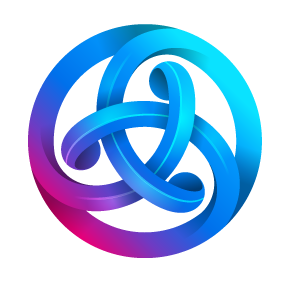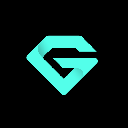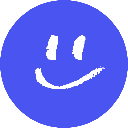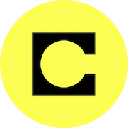-
 bitcoin
bitcoin $123963.239194 USD
1.37% -
 ethereum
ethereum $4529.082464 USD
1.07% -
 xrp
xrp $2.983640 USD
0.71% -
 tether
tether $1.000287 USD
0.02% -
 bnb
bnb $1179.874393 USD
2.99% -
 solana
solana $230.633678 USD
1.55% -
 usd-coin
usd-coin $0.999835 USD
0.03% -
 dogecoin
dogecoin $0.254240 USD
1.34% -
 tron
tron $0.341176 USD
0.15% -
 cardano
cardano $0.842285 USD
0.52% -
 hyperliquid
hyperliquid $48.537896 USD
-0.86% -
 chainlink
chainlink $21.863092 USD
-0.84% -
 ethena-usde
ethena-usde $0.999743 USD
-0.07% -
 sui
sui $3.579561 USD
-0.18% -
 stellar
stellar $0.403418 USD
2.67%
What cycle is BOLL suitable for? Is it more accurate to use 15 minutes or daily lines for short-term trading?
BOLL is versatile for various cycles; 15-minute lines capture quick moves, while daily lines align trades with broader trends, each offering unique short-term trading insights.
May 22, 2025 at 05:07 am
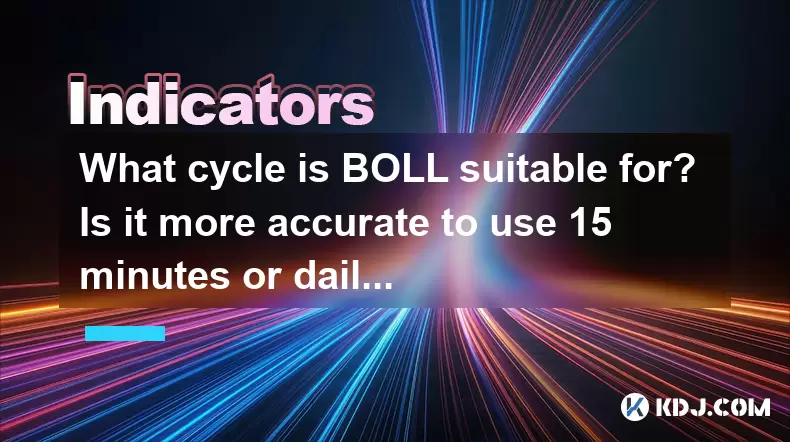
Bollinger Bands, often abbreviated as BOLL, are a popular technical analysis tool used by traders in the cryptocurrency market to gauge volatility and potential price movements. Understanding the appropriate cycle for using BOLL and the accuracy of different time frames, such as 15-minute or daily lines, is crucial for effective short-term trading strategies.
Understanding Bollinger Bands
Bollinger Bands consist of a middle band, typically a simple moving average (SMA), and two outer bands that are standard deviations away from the middle band. The standard setting for Bollinger Bands is a 20-period SMA with the outer bands set at two standard deviations. This setup helps traders identify overbought and oversold conditions in the market.
BOLL and Trading Cycles
BOLL is versatile and can be applied to various trading cycles, from short-term to long-term. The suitability of BOLL for a particular cycle depends on the trader's strategy and the specific market conditions. For instance, short-term traders might prefer using BOLL on shorter time frames to capture quick price movements, while long-term investors might use BOLL on daily or weekly charts to identify broader trends.
15-Minute vs. Daily Lines for Short-Term Trading
When it comes to short-term trading, the choice between 15-minute and daily lines can significantly impact trading outcomes. Each time frame offers unique insights and requires different approaches.
Using 15-Minute Lines
15-minute lines provide a more granular view of price movements, making them ideal for traders looking to capitalize on intraday volatility. Here's how to use BOLL on a 15-minute chart for short-term trading:
- Identify the middle band: The 20-period SMA on a 15-minute chart serves as the baseline for price action.
- Monitor the outer bands: Price touching or crossing the upper band may indicate an overbought condition, while touching or crossing the lower band may suggest an oversold condition.
- Look for squeeze patterns: A narrowing of the bands indicates reduced volatility, which often precedes a significant price move.
- Trade breakouts: When the price breaks out of the bands, it can signal a strong move in the direction of the breakout.
Using Daily Lines
Daily lines offer a broader perspective on market trends and are useful for short-term traders looking to align their trades with longer-term movements. Here's how to use BOLL on a daily chart for short-term trading:
- Assess the overall trend: The daily chart helps traders understand the broader market direction.
- Use the middle band as support and resistance: The 20-period SMA on a daily chart can act as a dynamic support or resistance level.
- Identify reversal signals: When the price moves from one band to the other, it may signal a potential reversal.
- Combine with other indicators: Using daily BOLL in conjunction with other indicators, such as RSI or MACD, can enhance the accuracy of short-term trading signals.
Accuracy of 15-Minute vs. Daily Lines
The accuracy of using 15-minute or daily lines for short-term trading depends on the trader's strategy and the specific market conditions. Here are some key considerations:
- Volatility: 15-minute lines are more sensitive to short-term volatility, which can lead to more frequent trading signals but also more false signals.
- Trend identification: Daily lines are better at identifying longer-term trends, which can help traders avoid getting caught in short-term noise.
- Risk management: Shorter time frames like 15 minutes require tighter stop-losses and more active risk management, while daily lines allow for wider stop-losses and more room for price fluctuations.
Practical Application of BOLL in Short-Term Trading
Applying BOLL effectively in short-term trading involves a combination of technical analysis and risk management. Here's a step-by-step guide on how to use BOLL for short-term trading:
- Choose the appropriate time frame: Decide whether to use 15-minute or daily lines based on your trading style and risk tolerance.
- Set up the Bollinger Bands: Use the standard settings of a 20-period SMA and two standard deviations for the outer bands.
- Analyze the price action: Look for price touching or crossing the bands, squeeze patterns, and breakouts.
- Confirm with other indicators: Use additional technical indicators to confirm BOLL signals and reduce false positives.
- Implement risk management: Set stop-losses and take-profit levels based on the volatility and your trading strategy.
Case Studies and Examples
To illustrate the practical application of BOLL in short-term trading, let's look at a couple of examples:
Example 1: Using 15-Minute Lines
- Scenario: Bitcoin (BTC) is trading within a tight range on the 15-minute chart, with the Bollinger Bands narrowing.
- Action: The trader identifies a squeeze pattern and prepares for a potential breakout.
- Outcome: The price breaks out to the upside, and the trader enters a long position, setting a stop-loss just below the lower band and a take-profit at the next resistance level.
Example 2: Using Daily Lines
- Scenario: Ethereum (ETH) is trending upwards on the daily chart, with the price consistently above the middle band.
- Action: The trader uses the daily BOLL to confirm the uptrend and enters a long position when the price touches the lower band, expecting a bounce back to the upper band.
- Outcome: The price bounces off the lower band and continues its upward trajectory, allowing the trader to profit from the move.
Frequently Asked Questions
Q: Can Bollinger Bands be used for long-term investing in cryptocurrencies?A: Yes, Bollinger Bands can be used for long-term investing by applying them to weekly or monthly charts. Long-term investors can use BOLL to identify major trend reversals and significant price movements over extended periods.
Q: How do I adjust the Bollinger Bands settings for different cryptocurrencies?A: The standard settings of a 20-period SMA and two standard deviations are generally effective across different cryptocurrencies. However, traders can experiment with different periods and deviations to find settings that better suit their specific trading strategies and the volatility of the cryptocurrency they are trading.
Q: What other technical indicators complement Bollinger Bands for short-term trading?A: Bollinger Bands can be effectively combined with other technical indicators such as the Relative Strength Index (RSI), Moving Average Convergence Divergence (MACD), and Stochastic Oscillator. These indicators can help confirm BOLL signals and provide additional insights into market conditions.
Q: Is it possible to automate trading strategies using Bollinger Bands?A: Yes, it is possible to automate trading strategies using Bollinger Bands. Many trading platforms and software allow traders to set up automated trading algorithms based on BOLL signals. However, it's important to backtest these strategies thoroughly and continuously monitor their performance to ensure they remain effective in changing market conditions.
Disclaimer:info@kdj.com
The information provided is not trading advice. kdj.com does not assume any responsibility for any investments made based on the information provided in this article. Cryptocurrencies are highly volatile and it is highly recommended that you invest with caution after thorough research!
If you believe that the content used on this website infringes your copyright, please contact us immediately (info@kdj.com) and we will delete it promptly.
- BlockDAG, DOGE, HYPE Sponsorship: Crypto Trends Shaping 2025
- 2025-10-01 00:25:13
- Deutsche Börse and Circle: A StableCoin Adoption Powerhouse in Europe
- 2025-10-01 00:25:13
- BlockDAG's Presale Buzz: Is It the Crypto to Watch in October 2025?
- 2025-10-01 00:30:13
- Bitcoin, Crypto, and IQ: When Genius Meets Digital Gold?
- 2025-10-01 00:30:13
- Stablecoins, American Innovation, and Wallet Tokens: The Next Frontier
- 2025-10-01 00:35:12
- NBU, Coins, and Crypto in Ukraine: A New Yorker's Take
- 2025-10-01 00:45:14
Related knowledge

What is a tower bottom candlestick pattern? Does it have a high success rate?
Sep 22,2025 at 07:18am
Tower Bottom Candlestick Pattern Explained1. The tower bottom candlestick pattern is a reversal formation that typically appears at the end of a downt...

What is a black hole pattern in the MACD indicator? Is it a cause for concern?
Sep 21,2025 at 06:54pm
Bitcoin's Role in Decentralized Finance1. Bitcoin remains the cornerstone of decentralized finance, serving as a benchmark for value and security acro...

How can I use the psychological line (PSY) to determine market sentiment?
Sep 17,2025 at 02:19pm
Understanding the Psychological Line (PSY) in Cryptocurrency TradingThe Psychological Line, commonly referred to as PSY, is a momentum oscillator used...

How can I determine if a double top pattern has officially formed?
Sep 21,2025 at 03:18am
Understanding the Structure of a Double Top Pattern1. A double top pattern consists of two distinct peaks that reach approximately the same price leve...

What is the Golden Valley pattern on the moving average? Is it better than the Silver Valley pattern?
Sep 21,2025 at 02:54pm
Understanding the Golden Valley Pattern in Moving Averages1. The Golden Valley pattern is a technical formation observed in cryptocurrency price chart...

What does a death cross of the RSI in the strong zone (above 50) mean?
Sep 17,2025 at 10:54pm
Understanding the Death Cross in RSI Context1. The term 'death cross' is traditionally associated with moving averages, where a short-term average cro...

What is a tower bottom candlestick pattern? Does it have a high success rate?
Sep 22,2025 at 07:18am
Tower Bottom Candlestick Pattern Explained1. The tower bottom candlestick pattern is a reversal formation that typically appears at the end of a downt...

What is a black hole pattern in the MACD indicator? Is it a cause for concern?
Sep 21,2025 at 06:54pm
Bitcoin's Role in Decentralized Finance1. Bitcoin remains the cornerstone of decentralized finance, serving as a benchmark for value and security acro...

How can I use the psychological line (PSY) to determine market sentiment?
Sep 17,2025 at 02:19pm
Understanding the Psychological Line (PSY) in Cryptocurrency TradingThe Psychological Line, commonly referred to as PSY, is a momentum oscillator used...

How can I determine if a double top pattern has officially formed?
Sep 21,2025 at 03:18am
Understanding the Structure of a Double Top Pattern1. A double top pattern consists of two distinct peaks that reach approximately the same price leve...

What is the Golden Valley pattern on the moving average? Is it better than the Silver Valley pattern?
Sep 21,2025 at 02:54pm
Understanding the Golden Valley Pattern in Moving Averages1. The Golden Valley pattern is a technical formation observed in cryptocurrency price chart...

What does a death cross of the RSI in the strong zone (above 50) mean?
Sep 17,2025 at 10:54pm
Understanding the Death Cross in RSI Context1. The term 'death cross' is traditionally associated with moving averages, where a short-term average cro...
See all articles





































































